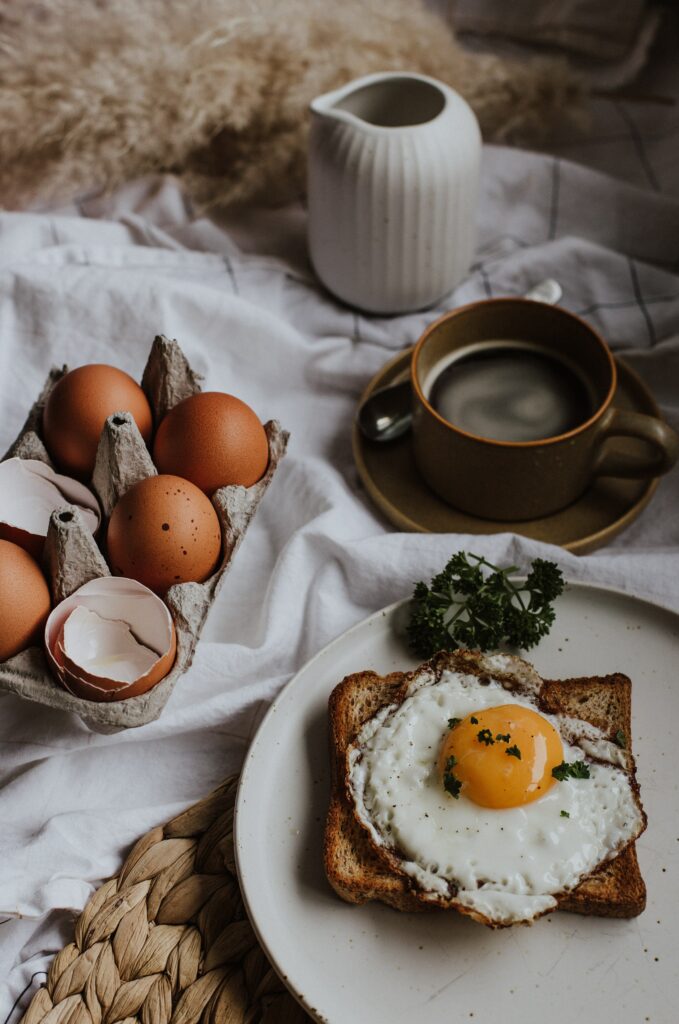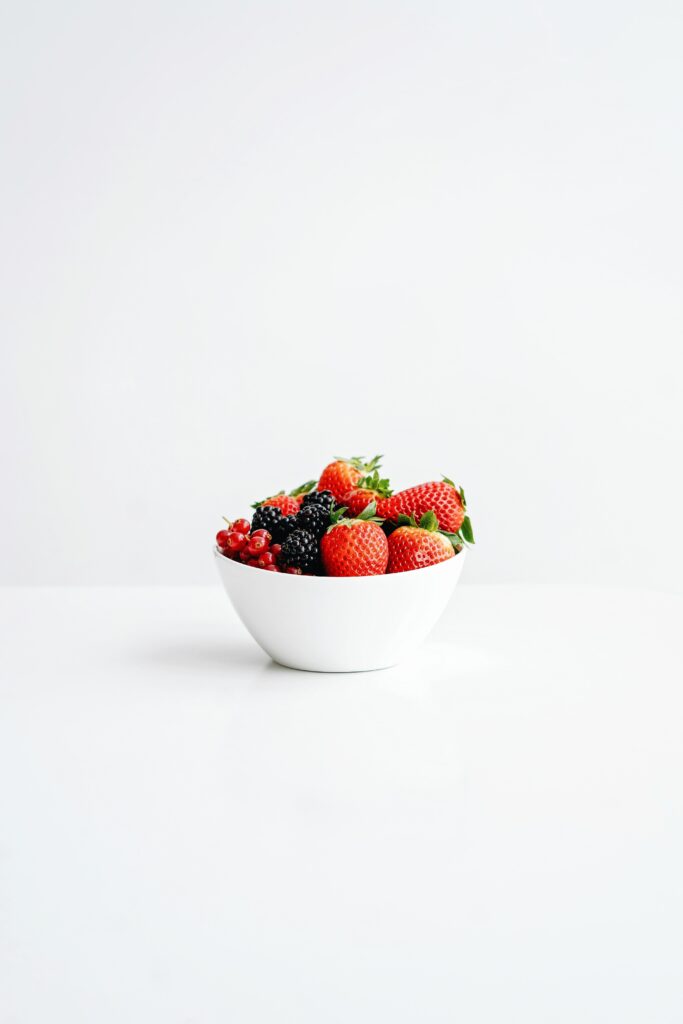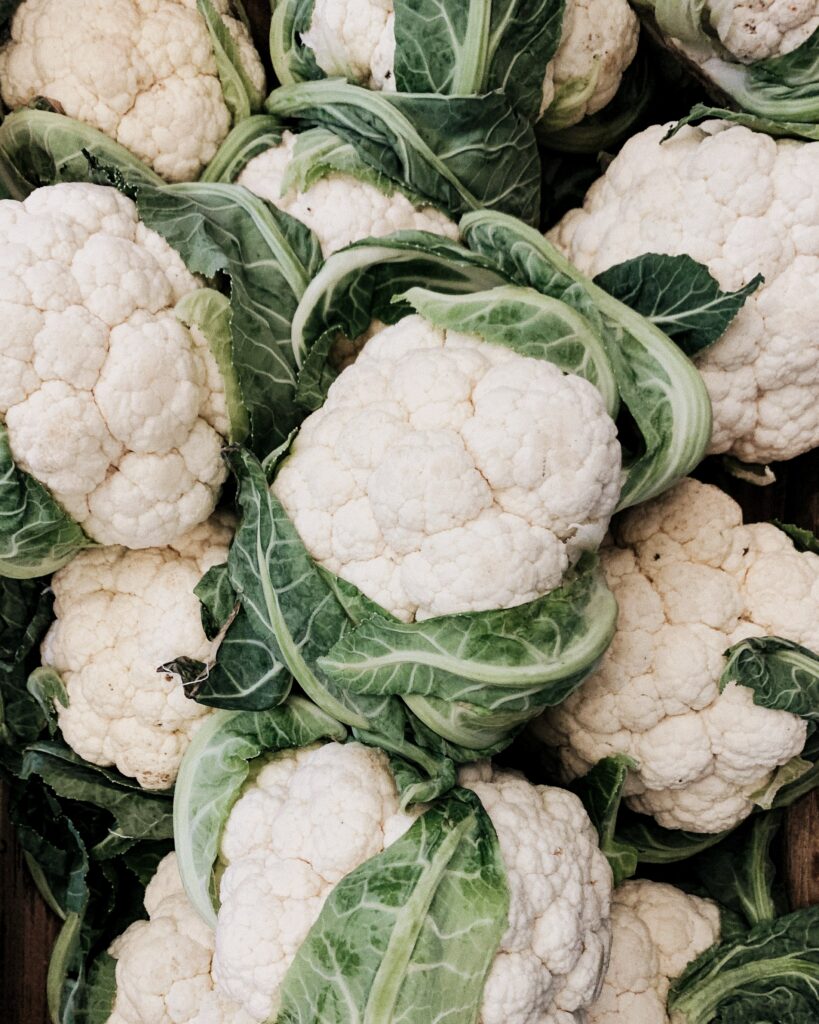Today, we’re diving into the menstrual cycle. My goal is to help you understand the four stages of your menstrual cycle, their importance, and how you can support each phase. As women, we’re conditioned to believe that having a period is a painful, frustrating experience. Good news is—it doesn’t have to be! In fact, my goal is to empower you to take your cycle into your own hands. Knowledge is power. Get to know your flow (I love using the Flo app to do this) and your flow will become a seamless part of your life. Let’s dive in.

the four main phases of the menstrual cycle
- menstruation phase
- follicular phase
- ovulation phase
- luteal phase
Each month—during the years between puberty and menopause—a woman’s body goes through a number of changes. In essence, to get ready for a possible pregnancy. This series of hormone-driven events is called the menstrual cycle. During each menstrual cycle, an egg develops and is released from the ovaries. The lining of the uterus builds up. If a pregnancy doesn’t happen, the uterine lining sheds during a menstrual period. Thus, the cycle starts again. The length of each phase can differ from woman to woman, and it can change over time.
What is the average length of the menstrual cycle?
This depends. For context, the length of your menstrual cycle is calculated from the first day of your period to the day before your next period starts. Menstrual flow might occur every 21 to 35 days and last 3-7 days. For the first few years after menstruation begins, long cycles are common. On average, a very healthy cycle looks like 28-30 days with bleeding lasting approximately five days. That said, every woman’s body is different.
Menstrual phase
The menstrual phase is the first stage of the menstrual cycle. It’s when you get your period. This phase starts when an egg from the previous cycle isn’t fertilized. Because pregnancy hasn’t taken place, levels of the hormones estrogen and progesterone drop. The thickened lining of your uterus, which would support a pregnancy, is no longer needed. And so, it sheds. During your period, you release a combination of blood, mucus, and tissue from your uterus. On average, women are in the menstrual phase of their cycle for 3-7 days. Foods to focus on include high-quality animal protein, avocado, leafy greens, ginger, and dark chocolate.

Follicular phase
The follicular phase starts on the first day of your period (so there is some overlap with the menstrual phase) and ends when you ovulate. It starts when the hypothalamus sends a signal to your pituitary gland to release follicle-stimulating hormone (FSH). This hormone stimulates your ovaries to produce around 5 to 20 small sacs, called follicles. Each follicle contains an immature egg. Only the healthiest egg will eventually mature (on rare occasions, a woman may have two eggs mature). The rest of the follicles will be reabsorbed into your body. The maturing follicle sets off a surge in estrogen that thickens the lining of your uterus. This creates a nutrient-rich environment for an embryo to grow. This phase lasts for about 16 days. Foods to focus on during the follicular phase include green vegetables, nuts, seeds, eggs, fish, and legumes.

Ovulation phase
Rising estrogen levels during the follicular phase trigger your pituitary gland to release luteinizing hormone (LH). This is what starts the process of ovulation. Ovulation is when your ovary releases a mature egg. The egg travels down the fallopian tube toward the uterus to be fertilized by sperm. The ovulation phase is the only time during your menstrual cycle when you can get pregnant. You can tell that you’re ovulating by symptoms like these:
- a slight rise in basal body temperature
- thicker discharge, with the texture of egg whites
Ovulation happens at around day 14 if you have a 28-day cycle—right in the middle of your menstrual cycle. It lasts about 24 hours. After a day, the egg will die or dissolve if it isn’t fertilized. Foods to focus on during ovulation include asparagus, Brussels sprouts, chard, dandelion greens, okra, and spinach. Additionally, antioxidant-rich fruits, such as raspberries, strawberries, and coconut help support further detoxification of rising hormones in the liver.

Luteal phase
After the follicle releases its egg, it changes into the corpus luteum. This structure releases hormones, mainly progesterone and some estrogen. The rise in hormones keeps your uterine lining thick and ready for a fertilized egg to implant. If you do get pregnant, your body will produce human chorionic gonadotropin (hCG). It helps maintain the corpus luteum and keeps the uterine lining thick.
If you don’t get pregnant, the corpus luteum will shrink away and be resorbed. This leads to decreased levels of estrogen and progesterone, which causes the onset of your period. The uterine lining will shed during your period. The luteal phase lasts for 11-17 days. Foods to focus on during the luteal phase include lean protein, cauliflower, cucumber, squash, sesame seeds, spinach, and brown rice.

Why is MY menstrual cycle irregular?
Every woman’s menstrual cycle is different. Some women get their period at the same time each month. Others are more irregular. Some women bleed more heavily or for a longer number of days than others. Your menstrual cycle can also change during certain times of your life. That said, it’s really helpful to track your periods. Eventually, the goal is to sync your cycle with your life. Any of these things can alter your menstrual cycle:
- Birth control. The birth control pill may make your periods shorter and lighter. While on some pills, you won’t get a period at all.
- Pregnancy. Your periods should stop during pregnancy. Missed periods are one of the most obvious first signs that you’re pregnant.
- Polycystic ovary syndrome (PCOS). This hormonal imbalance prevents an egg from developing normally in the ovaries. PCOS causes irregular menstrual cycles and missed periods.
- Uterine fibroids. These noncancerous growths in your uterus can make your periods longer and heavier than usual.
- Eating disorders. Anorexia, bulimia, and other eating disorders can disrupt your menstrual cycle and make your periods stop.
This is not an exhaustive list of reasons why a menstrual cycle can be irregular. If you sense your period is irregular (short, long, existent, or you spot between cycles, please reach out to your healthcare provider, or let’s work together!).
First period after having a baby
First and foremost, it is common for a woman’s period to change after having a baby. Mine did. As someone with PCOS, I didn’t expect my cycle to return with regularity after giving birth. However, much to my surprise, my period actually regulated after having a baby. I believe this had to do with balancing my blood sugar, not overexercising, incorporating seed cycling, and supporting my body with basic supplements.
For every woman it is different, but a woman’s cycle will typically return about 6-8 weeks after giving birth, fi you aren’t breastfeeding. If you do breastfeed, the timing of your cycle can vary. Those who practice exclusive breastfeeding might not have a period the entire time they breastfeed, or it may come back 3-6 months postpartum.
Seed cycling to regulate your menstrual cycle
Have you heard of seed cycling? In essence, seed cycling is a growing health trend, claimed to balance hormones, boost fertility, and ease symptoms of menopause. It involves eating flax, pumpkin, sesame, and sunflower seeds at different times of the month. Theoretically, seed cycling either enhances or inhibits the production of estrogen and progesterone in the body. In turn, balancing and optimizing your hormones, along with relieving symptoms due to hormonal imbalance. The easiest way to seed cycle is via Funk It Wellness. They do all the hard work for you. No need to buy seeds and grind them at home! Plus, I have a discount for you: use ‘EDIE15’ at checkout to save money on your seeds.

Seeds For THE FOLLICULAR PHASE
When: Days 1-14 of your cycle. During this phase, you need a balanced amount of estrogen to build the uterine lining.
What Seeds: Pumpkin and flax.
PUMPKIN SEEDS are rich in zinc, which aids in progesterone production and supports healthy testosterone levels. They’re also rich in antioxidants, which help protect your ovaries, eggs, and reproductive system as a whole.
FLAX SEEDS contain lignans, which aid in estrogen release, meaning they bind excess estrogen and help eliminate it to support ideal estrogen levels. Both flax and pumpkin seeds are rich in omega-3 fats, which encourage uterine blood flow and maintain healthy cell membranes.
Seeds For THE LUTEAL PHASE
When: Days 15-28 of your cycle – during this phase, the corpus luteum starts to release progesterone, which is a sex hormone that helps thicken the uterine lining and prepare it for implantation.
What Seeds: Sesame and sunflower.
SESAME SEEDS are rich in zinc, which aids in progesterone production. They also contain lignans, which help block excess estrogen, and they have a slew of other benefits, including the ability to lower inflammation.
SUNFLOWER SEEDS contain selenium, which helps improve liver function and remove excess estrogen. They also contain vitamin E, which stimulates progesterone production.
Ready for a better period?
Let’s work together. As a double-certified Integrative Nutrition Health Coach and Nutrition Consultant I help women in all stages of their lives. Take a look at my health coaching packages, send me an email: edie@wellnesswithedie.com, or schedule a 15-minute consultation with me, here.
Images courtesy of Unsplash.
This article is for informational purposes only. It is not, nor is it intended to be, a substitute for professional medical advice, diagnosis, or treatment and we recommend that you always consult with your healthcare provider.



Leave a Reply